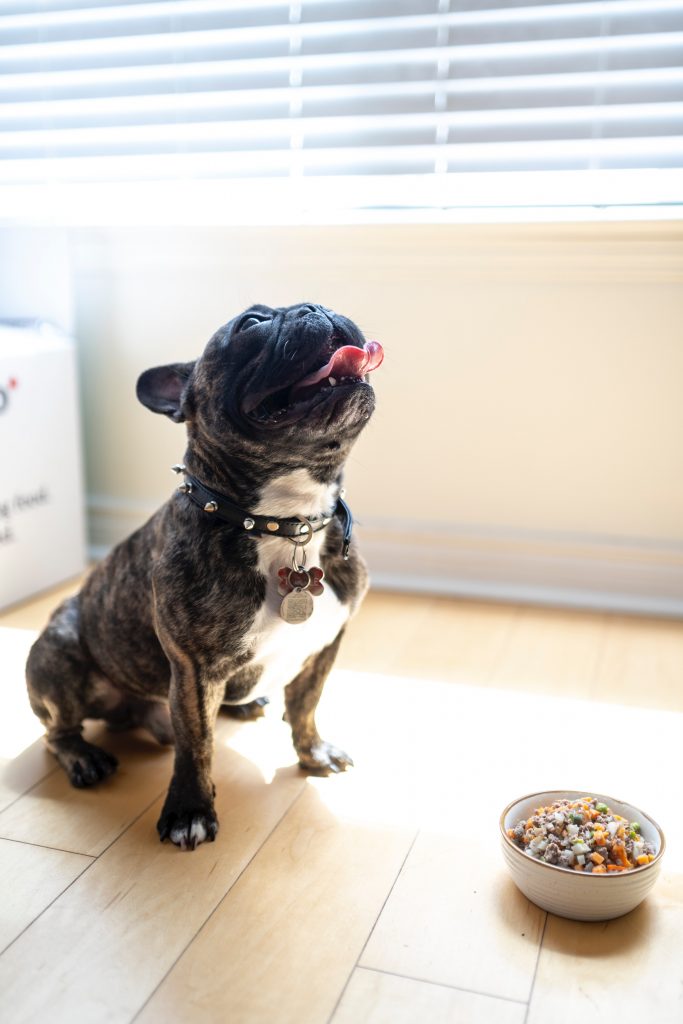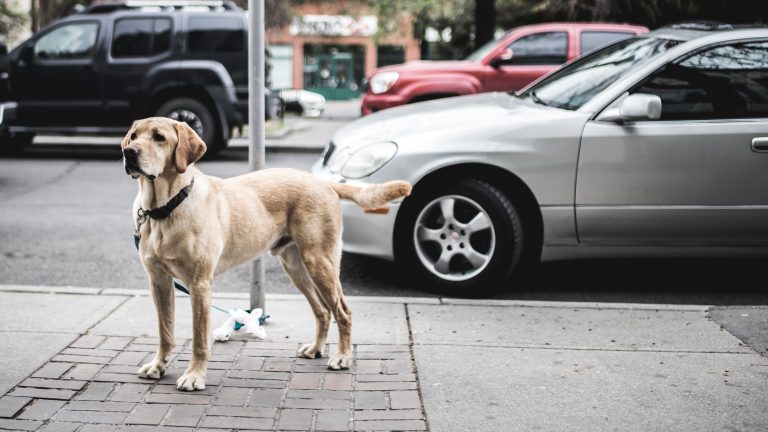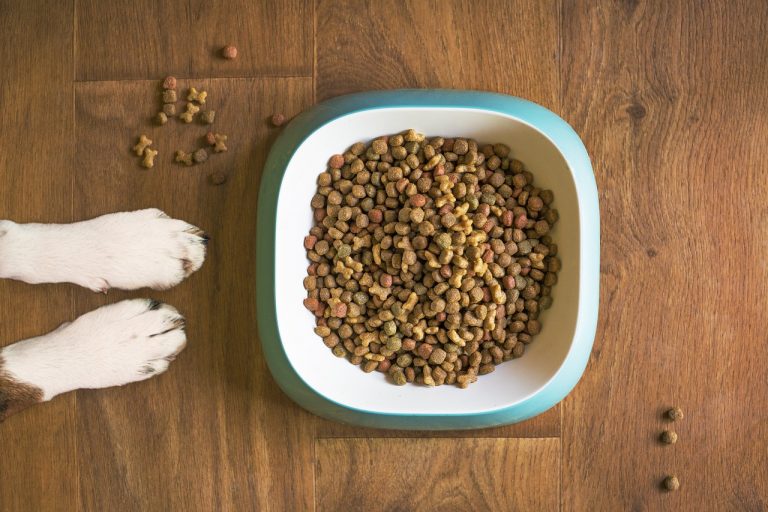In fact, there are beliefs and habits from the past that are actually incorrect in the present context. Have you ever thought that dog owners will make any fatal mistakes due to the old attitude in taking care of their beloved dogs? Let’s take a look at the 5 most common mistakes made by pet owners with Fetch that need to be stopped immediately.

An ancient mistake that still exists in Vietnam is that many Vietnamese still believe that food for humans is also good for dogs. This notion is wrong, dogs are predators so the diet needs more animal protein while humans are omnivores, we eat more vegetables than meat. There are foods that are good for dogs, and others that are not (and even cause poisoning).
Our daily food is too fatty, so it makes dogs difficult to digest; Eating a lot of human food will make them vomit, have diarrhea and even worse like acute pancreatitis. Many human foods contain too much sodium which is harmful to dogs.
How to improve
Before giving your dog any human food, check with your veterinarian or read information online (from reputable sources) to see if the food is good for your dog. The safest way is to always choose dog foods specifically made for dogs from pet stores (many options such as dry food, wet food, treats, dried meat, bones, etc.).
Dogs are under too much stress

Most of us think of pet dogs as having such a comfortable and perfect life. They don’t have to work to earn money, they don’t have to deal with traffic jams or raise children or the complicated relationships of the human world. Therefore, pet dogs must always be happy and happy at all times. But the unfortunate truth is that it’s not, dogs get stressed too. There are many causes of stress. According to the American Kennel Club, the three main causes of stress anxiety in dogs include:
- Loss of memory and confusion due to advanced age. Canine dementia, also known as canine cognitive disorder (CCD), is a cognitive disorder in dogs with symptoms similar to Alzheimer’s disease in humans. This condition occurs due to the aging of the dog’s brain, changing old behaviors and memories, learning ability as well as cognitive ability. This disease will make the dog nervous and confused.
- Leaving a dog at home alone: There are many reasons why owners have to leave their dogs alone at home for longer than usual such as: the new owner has a new job, or returns to work after maternity leave. In addition to all day shopping and many other reasons, for dogs that are used to your presence at home, they will have a feeling of anxiety when alone.
- Fear (loud noises, new environments, large objects or large groups of people):
Introduce your dog to a stranger: although everyone says “dogs are man’s best friend”, the truth is that dogs don’t like everyone. Maybe the dog has a history of being abused by the owner or he is feeling invaded, there are times when the dog needs time to get used to strangers. The best way is to take each step slowly. Give your dog the time and space to get comfortable with new people.
Moving house: Whether it’s moving to a new house or just adopting a dog, the changing living environment will make the dog feel anxious and stressed. You’ll probably notice that your dog shows signs of anxiety (like urinating or vomiting in the house), which may just be the stress of being in a new place.
In addition, recent studies show that the owner’s mental health and stress levels have an effect on a dog’s stress. Based on publicly available scientific reports, “a large part of a dog’s stress level reflects the owner’s stress status.”
Ways to improve
- The best way to reduce stress for dogs is to give them daily or regular exercise. Walking, playing, hanging out at a dog park or swimming, all of these physical activities not only help dogs reduce stress but also help them live longer and healthier lives.
- Letting your baby play brain-stimulating games is just as effective as physical activity and you can connect with your baby more deeply. Look for toys that make your baby brainstorm to get a treat.
- Transport cages for dogs are quite useful especially for transporting pets safely, in addition, transport cages are also safe havens for them. Just like wolves or feral dogs in the wild, dogs feel more comfortable and secure in the carrier space.
- Blankets, special treats and their own toys help stressed pets become relaxed and comfortable. Using items that already smell like them, like towels or blankets, will help them feel even more secure.
- Relaxing ambient sounds such as classical music are often used to help dogs feel relaxed and reduce stress. When the owner is not at home, let these gentle melodies make the dog feel comfortable in our absence. Many owners simply turn on the TV to let their dog feel there when the owner is busy with work or school or errands.
- Attitude determines everything so if your dog is feeling stressed or anxious, you have to stay calm. Dogs will mimic their owner’s emotions and if the owner is upset, they will continue to be emotionally stressed. In addition, the owner should not let the baby eat or reward the cake to appease them. They will think that when they are stressed or scared they will be eaten or rewarded and that is not good.
- In many cases, you may have to figure out what’s causing your dog’s stress. For example, the dog may not like other dogs, you can start by introducing them to smaller and less likely-to-fight animals, such as females, in an enclosed space. and easily controllable.
- Wrap the dog with a blanket/blanket and let him sit on your lap, master and servant will spend a comfortable relaxing time together and this will give surprisingly good results. Just having an owner around will help them feel safe and secure and reduce stress.
- The use of anesthetics should be avoided as there are other, natural alternatives that are safer in the case of dogs experiencing extreme stress such as seeing fireworks, thunder, moving houses and others. other major stressful events. In addition to the side effects of the anesthetic, the addictive effect will make the anesthetic gradually reduce its impact on the dog after a period of use. Using a lot of anesthetic will lead to a dog’s vulnerability to injury, health problems, sudden death or, in many cases, even more stress for dogs because they lose control and feel confused and disoriented.
The best way is to spend time with the dog instead of using methods such as medication. The simple yet effective suggestions above will make a big difference for owners and dogs in managing stress.
Breeding dogs outside

Good condition is quite common in Vietnam. Many families still let their dogs sleep outside to keep the house, as in the old days. However, this is not good for the dog’s health, both physically and mentally, many dogs do not even have a dedicated home for them or a shelter to sleep in.
Ways to improve
It is best to let your baby sleep in the house, find a quiet, cozy, and safe place to put your baby’s bed. The owner and the dog can also spend more time playing together and increase the emotional connection.
If you have to leave your baby outdoors for a fairly long period of time, build a dog crate for him to have a place to hide when the weather turns bad. Choose one that’s insulated, waterproof, and has a roof that blocks the sun’s rays. The cage doesn’t need to be too big, just big enough for the dog to walk around comfortably. Give your baby a warm blanket in the rainy season and a moist towel in the dry season.
Never leave your baby outdoors for long periods of time without the owner’s attention, including at night. If the baby has heat stroke or hypothermia that is not detected in time, it will make the condition worse. Always keep an eye on your baby and make sure he has enough water to drink and doesn’t show any unusual health signs.
You choose the wrong kind of food

Choosing the wrong food for dogs has more consequences than owners think. Below is a list of problems that occur when you give your baby the wrong food:
Skin allergies
Due to many causes: caused by mites (a tiny insect) that accumulate in food grains; an allergy to one or more ingredients of the food (usually to protein or meat); or the dog is allergic to the additives/fillers found in nut or canned food.
Diabetes
People are increasingly concerned about dog foods containing high levels of carbohydrates that will cause hyperglycemia. Whole grains are an integral part of a nutritionally balanced diet, but the high carbohydrate content of many grain foods can cause the same health problems in dogs as they do in humans.
Unbalanced portions
Home-cooked or fresh foods that are not portioned by a veterinarian or pet nutritionist can lead to nutritional deficiencies or excesses if owners allow Dogs eat for long periods of time. The result can lead to dogs with a variety of health problems, from heart disease to blindness.
Malnutrition
Eating foods that are too low in protein or too low in essential fatty acids (eg, a vegetarian or vegan diet), can lead to severe protein deficiencies, malnutrition, and even the death of dogs.
Obesity and Pancreatitis
Feeding dogs foods that contain too many calories from fat can cause obesity or pancreatitis in dogs with a genetic predisposition, causing pain for dogs.
Urinary Stones or Crystals
Food that contains a lot of protein, or an excess of unnecessary protein (such as undercooked food) can cause stones or crystals in the urinary tract, which is common in animals. Dogs have a genetic predisposition.
Gastroenteritis
Dogs that eat raw, commercial grain, or canned foods are at risk of food contamination. E. coli, Salmonella, Campylobacter, and Clostridium are bacteria that, if present in food, will lead to bloody diarrhea, which in severe cases may require emergency hospitalization or death. Human cross-contamination of Salmonella or E.coli from dogs is a matter of concern.
Immunosuppression
We studied dogs on a grain-based diet compared with dogs on cooked food. The data show that dogs that eat nut foods have blood test results that show immunosuppression. The theory is that during the production of granules, it is inevitable that toxins will be contaminated, thereby causing immunosuppression when dogs eat them.
Metabolic disease It
can be caused by a deficiency of important nutrients such as calcium. Too little calcium can lead to nutritional diseases such as nutritional hyperthyroidism and diseases affecting bone growth.
Too much calcium and vitamin D
If during the growing period, dogs eat foods containing too much calcium and vitamin D, which will lead to diseases affecting bone development such as elbow and hip dysplasia, or deformity. the bone.
Is there any way to find the right foods to avoid the above diseases?
Most of the above problems are only discovered after a long period of feeding the dog a food. Usually, dog food brands have balanced nutritional formulas, but home-cooked foods and commercial granules both have their pros and cons – balancing the nutrition of homemade food is quite difficult, If the owner decides to only feed the dog homemade food, it is advisable to consult a professional.
The best way is to start your dog on reliable grain food, step by step as recommended below to find the best food, and observe and monitor your dog to make sure he is healthy and happy. There are no signs of health to worry about – take your baby to the vet when you feel unusual.
How to improve
If you see your dog showing signs of health that we listed above, you should change to a different food. Step by step as follows:
1. Find a formula that is appropriate for your dog’s age
At each stage of life, dogs will have different nutritional needs, so feeding your dog nutritionally appropriate foods for their age is very important. important to meet your baby’s nutritional needs. If you’re looking for the right puppy food, look for foods that contain quality protein to help your baby build muscle and DHA, an important nutrient found in breast milk. For older dogs, you should look to buy food formulated for older dogs, or create a separate formula for your dog. This food will help your baby stay at a healthy weight and support him in his daily activities.
2. Choose food with a formula that is suitable for your baby’s body.
Many dogs will be healthier when they eat food with a formula that is suitable for their body shape. Large or very large dogs will be suitable for foods containing glucosamine, which supports healthy joints, small or super small dogs will prefer foods with small, and medium seeds.
3. How is the baby’s movement status
A dog that has to work or compete certainly needs more calories than a dog that only moves when it is sometimes taken for a walk. If he is a competitive dog, he will need a super-nutrient formula that is individually portioned. On the other hand, if your dog does not exercise much, you should choose a food to maintain weight to maintain good health for him.
4. Pay Attention to Your Dog’s Special Nutritional Needs
Does your dog have a particular preference for certain foods or have a health condition to watch out for, such as sensitive skin? You can choose a formula that is tailored to your baby’s unique nutritional needs. The right nutrients will help support your baby’s condition, if any.
Let your baby walk too much

Dog owners should be aware that too much exercise (such as too much walking) can lead to health problems such as pain, and muscle tearing. Excessive trauma and acute arthritis. Increased risk of serious ligament and tendon injuries.
How to improve
Some recommendations from your veterinarian about the right time to walk your dog can help you get a better idea. However, each individual will have different needs and should be tailored to the individual dog’s condition. Some dogs are more active than others. In general, it is recommended that your baby walks for at least 30 minutes a day for an adult and medium-sized dog. Small dogs and old dogs should exercise less, and large or active dogs should be allowed to walk longer. For example, 45 minutes or more, a 30-minute walk is a common standard for most cases to help keep your dog fit and healthy.
For puppies, you should take them for a walk for only 15 minutes to prevent them from injuring their joints from walking for too long. For older dogs or dogs with health problems, it’s best to check with your veterinarian to make sure he doesn’t have arthritis or other health problems that cause pain when he walks. In this case, observe your baby and only take him for walks at the right time to avoid causing pain.
What should I do if my dog doesn’t want to go for a walk or wants to go for walks more?
The recommended walking time above is just a general average, each dog is a unique individual. So you can adjust your baby’s walking time shorter or longer depending on the needs and feelings of the baby.
The best way to know if the length of a walk is appropriate is to observe the dog. If your baby is active and eager to go, you’ll find that he loves to go for walks and easily keeps up with you. When babies don’t want to walk anymore, they will slow down and want to stop and rest quite often.
Summary
Everything will change with time. There are old beliefs that are no longer relevant. Dog owners should update new information to take better care of their dog. With the above 5 common mistakes of dog owners, Fetch hopes you will pay attention and correct them (if you are making any mistakes) so that your dog can be cared for better and healthier.